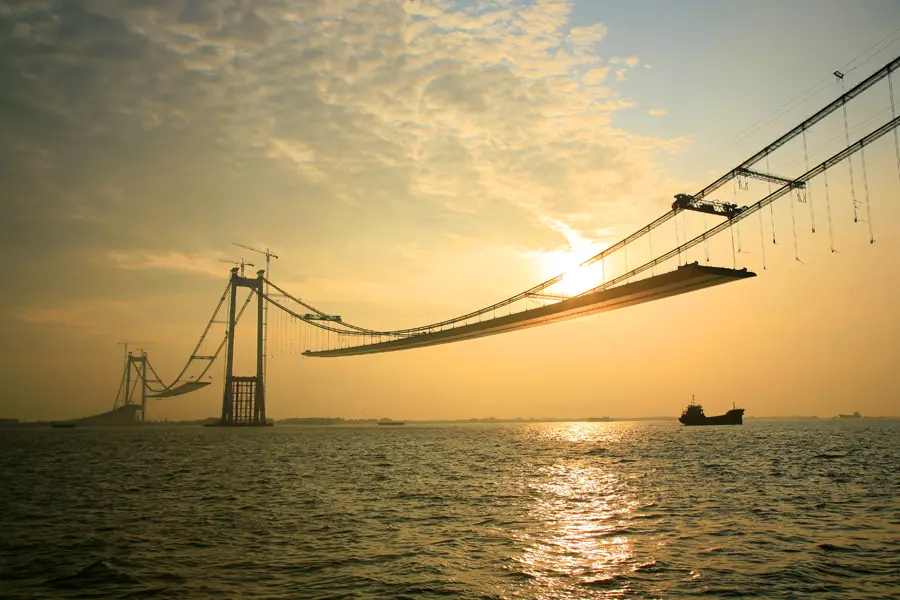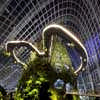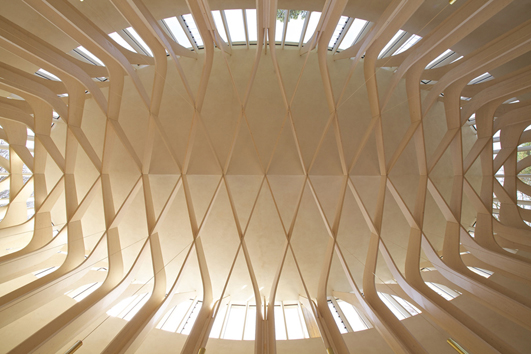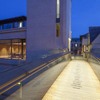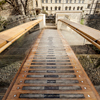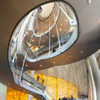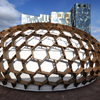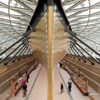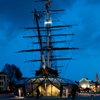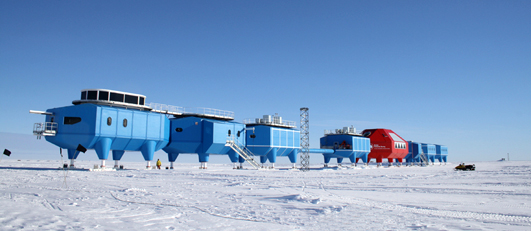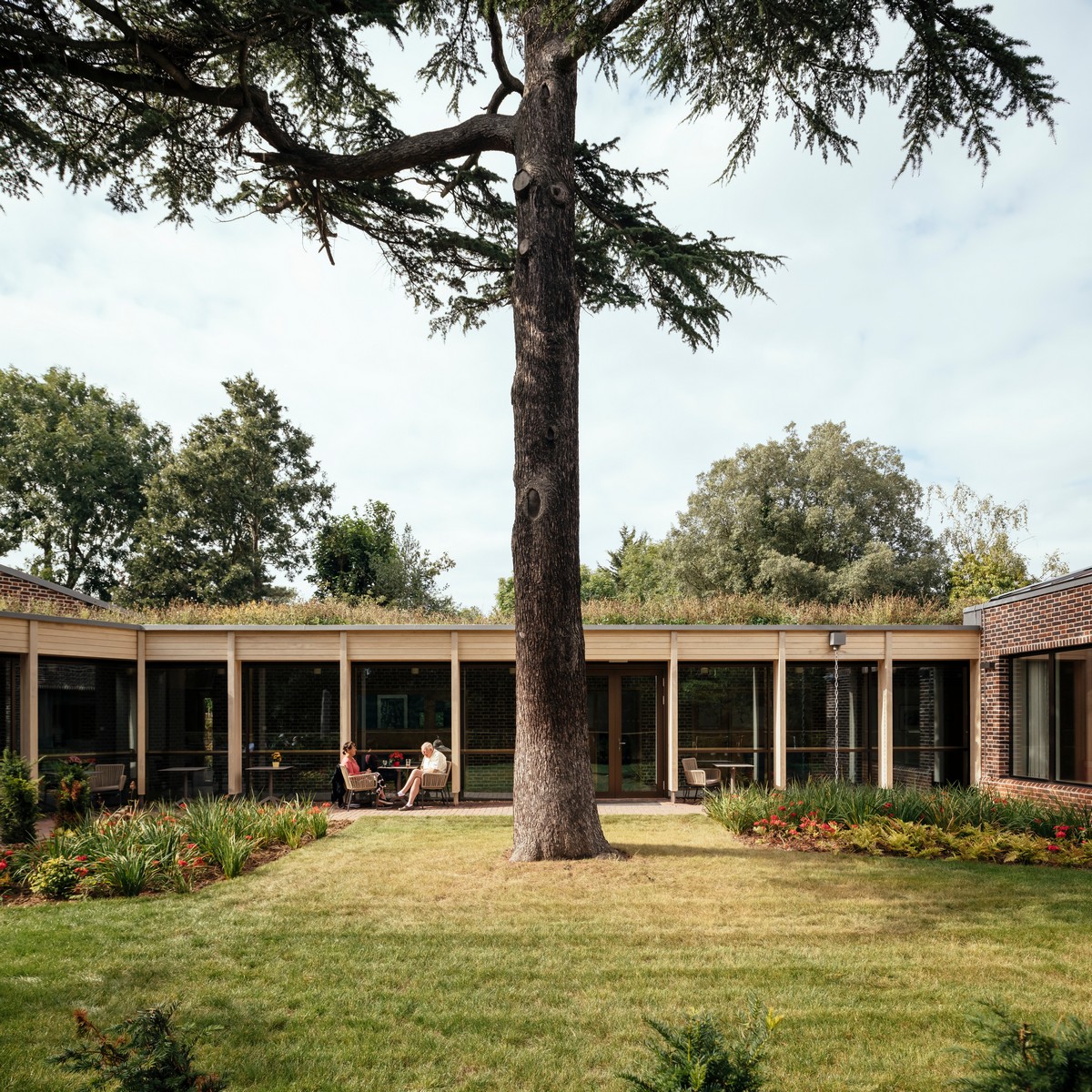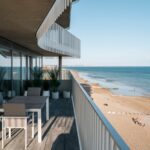The Structural Awards 2013, Global Engineering Contest, London Event, Architect Prizes
The Structural Awards 2013
Global Engineering Award Shortlist Announced
19 Nov 2013
Structural Awards 2013 Winners
World engineering celebrated at The Structural Awards 2013
The winners of The Structural Awards 2013 were announced on 15 November, during a ceremony held at the Brewery in London. The Awards, organised each year by The Institution of Structural Engineers, celebrate the world’s most talented structural designers and their indispensable contribution to the built environment.
Taizhou Bridge, China – The Supreme Award for Structural Engineering Excellence:
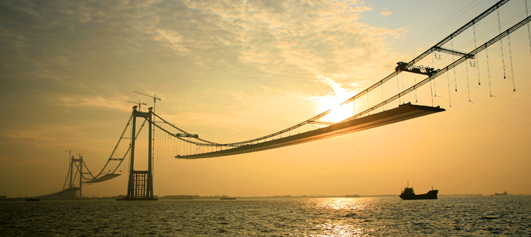
photo from Structural Awards 2013
President of The Institution of Structural Engineers, Y.K. Cheng said:
“The Institution of Structural Engineers holds The Structural Awards each year to showcase the challenging environments in which engineers work and the complex structures they help to raise.
“The aim is to recognise the range of skills that characterise our global profession, raise awareness among the general public, and encourage young people into structural engineering careers.”
“This year we have once again enjoyed a high standard of innovative entries and I congratulate all our winners on their achievements.”
Taizhou Bridge:

photo from Structural Awards 2013
Taizhou Bridge over the Yangtse River in Jiangsu Province, China, has been presented with The Supreme Award for Structural Engineering Excellence, as well as the Award for Highway or Railway Bridge Structures. The bridge, designed by Jiangsu Provincial Communications Planning and Design Institute alongside AECOM Asia Company Ltd, is the world’s first long-span, three-tower suspension bridge.
The Awards judges said:
“This enormous project was an extraordinary achievement, which pushed the frontiers of suspension bridge technology to new heights.
“Bridge engineering has just moved forward by a very significant margin.”
Other Award winners included:
Award for Arts or Entertainment Structures
– Gardens by the Bay, Singapore
Structural Designer: Atelier One with Meinhardt Infrastructure
Gardens by the Bay is an important attraction on the water’s edge of Singapore.
The gardens include two magnificent cooled conservatories, a small forest of “super-trees” and an aerial walkway, all of which exemplify innovative structural engineering.
The judges commented that:
“The engineers clearly applied innovative thinking to achieve a series of structures that are original and visually striking. This is a project full of ideas and truly sustainable achievements.”
Award for Commercial and Retail Structures
– China Central Television New HQ, Beijing, China
Structural Designer: Arup; and the East China Architectural & Design Research Institute
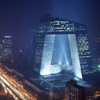
photo : Fu Xing Architectural Photography
At 234m and 194m tall, linked together by a 15 storey cantilevered “overhang” and a 10 storey podium, compounded by the location within a highly seismic area, the two leaning towers posed significant structural challenges.
The judges said: “This is an excellent example of the structural engineer providing a solution to a very difficult problem with a basic concept that is clear and robust. Their skills in innovation, collaboration and attention to detail are apparent in the development of the final design.”
Award for Community or Residential Structures
– Bishop Edward King Chapel, Oxfordshire, UK
Structural Designer: Price & Myers
The structural engineers and architects involved in this project developed a design embracing sustainability, architectural vision and structural innovation.
The judges said: “This chapel is clearly an inspirational building for its users, and this is down, in no small part, to extraordinary skills in designing and innovating with timber.”
Award for Education or Healthcare Structures
– University of Exeter Forum, Devon, UK
Structural Designers: Buro Happold
The University of Exeter Forum provides a new heart for the University’s main campus.
This complex project involved extensive refurbishment of a number of the University’s buildings and was delivered on budget.
The judges admired the use of an elegantly expressed, sustainable and efficient timber gridshell roof, saying: “The simplicity of the detailing belies the complexity in analysis and form-finding involved.”
Award for Infrastructure or Transportation Structures
– Emirates Air Line, London, UK
Structural Designers: Expedition Engineering; Buro Happold and URS
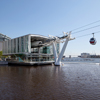

photograph : Luke Hayes (left) ; Mace (right)
The Emirates Air Line across the UK’s River Thames, is a dramatic new addition to London’s infrastructure, linking two major landmark destinations, the O2 and the ExCel Exhibition Centre.
The judges said: “The synergy between architecture and engineering has yielded a new landmark which is both beautiful and bold. Delivery within a very short timescale is testament to the whole project team and a fine example of what the UK construction industry can deliver.”
Award for Pedestrian Bridges
– Pembroke College Footbridge, Oxford, UK
Structural Designer: Price & Myers
The Pembroke College Footbridge provides a walkway between the existing college and the new buildings opposite.
Judges were impressed by: “the way the geometrical constraints on this project were solved to achieve an extremely elegant structure that complements its surroundings.”
Award for Small Practices
– The Feature Stairs for the New Mariinsky Theatre, St Petersburg, Russia
Structural Designer: Malishev Wilson Engineers
The judges said: “This family of structures is well executed, displaying versatility and ingenuity. The designers conceived innovative structural systems and used materials in an appropriate way to deliver an imaginative and elegant solution.”
Award for Small Projects
– KREOD Pavilion, London, UK
Structural Designer: Ramboll
The KREOD Pavilion represents a new approach to the difficult problem of creating a functional, demountable enclosure in an attractive, interesting and sustainable way.
The judges said: “Once in a while developing new techniques and processes, coupled with imaginative and perceptive engineering skills, allows the realisation of a design that previously would not have been feasible or financially viable. Though temporary by nature, the KREOD Pavilion is a seminal structure, demonstrating the possibilities of the exo-skeletal approach to permanent habitable buildings of the future.”
Award for Sports and Leisure Structures
– First Direct Arena, Leeds, UK
Structural Designer: Arup
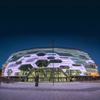
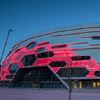
photos from The Structural Awards 2013
The First Direct Arena is a landmark music venue in the heart of Leeds city-centre with a capacity of 13,500.
The judges thought that “the design is tailored beautifully to its sloping site through its fan shape, and is visually stunning as a result. The roof solution in particular, with main trusses located in the air gap, is a highly-effective innovation that both reduces cost and increases acoustic insulation.”
Structural Heritage Award
– The Cutty Sark, London, UK
Structural Designer: Buro Happold
The Cutty Sark conservation project has preserved the last remaining tea clipper and turned her into a new event venue. The wrought iron structure of the hull was sagging after many years of unnatural support on the keel, and so the team decided to raise the ship11ft into the air to hang just above the waterline.
The judges said: “The Cutty Sark needed some very complex structural repairs, verging on reconstruction, in order to raise and re-support her. This work required some exceptional engineering.”
Award for Sustainability
– Halley VI Antarctic Research Station, Antarctica
Structural Designer: AECOM
Halley VI, the British Antarctic Survey’s research base, provides a unique environment for the study of crucial earth science in one of the most challenging and extreme climates on the planet.
The judges found this to be a highly sustainable and remarkable project, commenting that the research base is “one of the most challenging and technically complex buildings ever delivered, and is an outstanding example of structural design, innovation and construction.”
For more information about The Structural Awards 2013, visit: www.structuralawards.org
12 Aug 2013
Structural Awards 2013 Shortlist
The Structural Awards 2013: Celebrating Global Engineering
The shortlist for The Structural Awards 2013 has been released by The Institution of Structural Engineers, celebrating achievement, innovation and excellence in the field of structural engineering. All kinds of structures are recognised, from skyscrapers and bridges to sports arenas and restoration projects.
It is a truly global shortlist, including entries from Germany, Georgia, China and even Antarctica, as well as many from the UK. The winners will be announced at The Structural Awards ceremony in London on 15 November 2013.
“Structural engineers make an absolutely vital contribution ensuring that our urban environments are safe and secure,” said Y.K. Cheng, President of The Institution of Structural Engineers, “yet their work often goes unrecognised.
“The Institution of Structural Engineers holds The Structural Awards each year to showcase the variety of challenging environments in which engineers work and the highly complex structures they help to raise.
“The aim is to recognise the astonishing range of skills that characterise our global profession, raise awareness among the general public, and encourage young people into exciting structural engineering careers.”
The 2013 shortlist highlights
China Central Television’s new Headquarters, Beijing, China
Design: Arup; East China Architectural & Design Research Institute
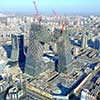
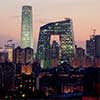
photos : Zhou Ruogu Architecture Photography
Description:
The architects’ design for the new building is intended to encourage people from various disciplines to work together, creating a highly unusual shape. The two leaning towers, 234m and 194m tall, linked together by a 15 storey cantilevered “overhang” and a 10 storey podium, posed significant structural challenges, compounded by the location in a highly seismic area. The response was to brace the facade on all sides to form a continuous tube that is ideally suited to deal with the nature and intensity of the loading.
Judges’ comments:
This is an excellent example of the structural engineer providing a solution to a very difficult problem with a basic concept that is clear and robust. In addition, their skills in innovation, collaboration and attention to detail are apparent in the development of the final design.
Anaklia-Ganmukhuri Pedestrian Bridge, Anaklia, Georgia
Design: Fast + Epp; Leonhardt Andrä und Partner
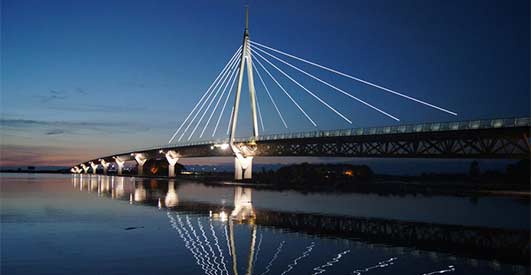
photo : CRP
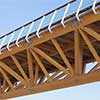
photo : Hess Timber
Description:
Serving as a vital link across the Enguri River to the Black Sea resort town of Anaklia, Georgia, the Anaklia-Ganmukhuri Pedestrian Bridge is considered the longest cable-stayed timber bridge in Europe and possibly the world.
Judges’ comments:
Overcoming significant challenges, the elegant result achieved by the designers extends confidence in the use of timber in large scale structures.
Halley VI Antarctic Research Centre, Antarctica
Design: AECOM
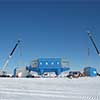 photo : AECOM |
 photo : Antony Dubber |
Description:
Sited on a pristine floating ice shelf in Antarctica, the world’s first fully-relocatable, permanently manned research station, Halley VI, sits on skis and is designed to lift itself out of rising snow. Successful delivery in one of the harshest and remote locations on earth required a unique understanding of and response to the environment, scientists’ needs, restricted construction window, prefabrication, shipping constraints and maintenance limitations. The design met the stringent international environmental standards required for this region and will leave nothing behind when it moves on.
Judges’ comments:
The panel admired the dedication and collaborative response to meeting the unique challenges of this project: to deliver a practical and economic solution without compromise on the environmental demands of the project and its client.
The Emirates Air Line cable car, London, UK
Design: Expedition Engineering; Buro Happold; URS
 photo : John Sturrock |
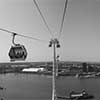 photo : Luke Hayes |
Description:
The Emirates Air Line is a dramatic new addition to London’s infrastructure linking two major landmark destinations, the O2 and the ExCel Exhibition Centre. The project was delivered in a remarkably short timescale, only two years from concept through to public opening.
Judges’ comments:
The synergy between architecture and engineering has yielded a new landmark which is both beautiful and bold. Delivery within a very short timescale is testament to the whole project team and a fine example of what the UK construction industry can deliver.
Southend Pier Head, Essex, UK
Design: Price & Myers
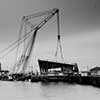 photo : Price and Myers |
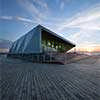 photo : Luke Hayes |
Description:
This is an economic building, pre-fabricated off-site in timber and steel and kept light by efficient structural engineering design. It needed to be light because it was fabricated as one element off site. It was then floated out to the end of the pier and lifted into its final resting place.
Judges’ comments:
The sense of theatre engendered by floating the building out and lifting it into place, all in one day, is only part of the story – it also helped keep the construction team safe. The building and its unusual construction story has apparently already entered local folklore!
Jasper Place Library, Edmonton, Canada
Design: Fast + Epp
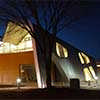

photos : Stephan Pasche
Description:
The striking feature of this library building is the undulating roof structure. The clean, open and uncluttered architectural expression is realised through a post-tensioned concrete structure utilising the inherent longitudinal stiffness of the concrete waves.
Judges’ comments:
The structural engineers on this project used geometry and stiffness to best advantage in order to realise a concrete roof which appears to defy gravity. This is only possible through a profound understanding of engineering relating to stability, load paths, structural form, materials and construction.
Tynemouth Railway Station, Newcastle, UK
Design: Ramboll
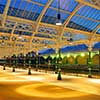
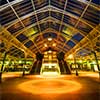
photos : Ramboll
Description:
Constructed in 1882, the fine wrought and cast iron canopy of the old LNER station at Tynemouth was on English Heritage’s “at risk” register due to widespread corrosion. The causes were identified and the repairs of this Grade II listed structure were carried out with meticulous attention to detail, restoring the canopy to its splendid original condition.
Judges’ comments:
Much of the structure was severely cracked and corroded with some parts near to collapse. The judges found this to be an exemplary repair of the very fine wrought and cast iron canopy.
Gardens by the Bay, Singapore
Design: Atelier One, Meinhardt Infrastructure
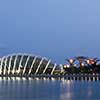 photo : Craig Shephard |
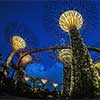 photo : Darren Chin |
Description:
The Gardens by the Bay is already an important attraction on the water’s edge of Singapore. The gardens include two magnificent cooled conservatories, a small forest of “super-trees” and an aerial walkway, all of which exemplify innovative structural engineering. The whole complex is underpinned by a commitment to energy conservation and the enhancement of nature.
The conservatories have an usual structure where an arch provides a spine to support a series of tensioned ribs – a highly original approach. The super-trees are sculptural objects in their own right but provide a really intriguing combination of engineering and aesthetic role – as solar collectors, chimneys, steam exhaust outlets and shade devices.
Judges’ comments:
The engineers have clearly applied innovative thinking to achieve a series of structures that are original and visually striking. This is a project full of ideas and truly sustainable achievements.
One One One Eagle Street, Brisbane, Australia
Design: Arup
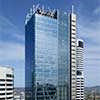
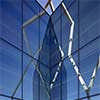
photos : Christopher Frederick Jones
Description:
The unusual arrangement of the perimeter columns in this 50 storey tower is a direct response to the physical constraints and opportunities presented by the site. The seemingly random orientation of the columns follows a set of structural rules including a zero sum of angles at each floor to ensure overall stability.
Judges’ comments:
For this building the structural engineer has developed a design that responds to the architectural vision whilst solving the problems of support and enhancing the performance of the building. Such an integrated solution demonstrates the excellence that we all strive for.
Teign Crossing Cycle Bridge, Newton Abbot, Devon, UK
Design: Engineering Design Group, Devon County Council
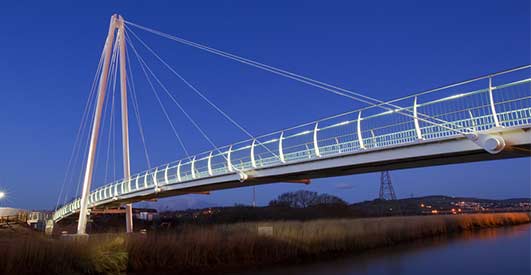
photo : Devon County Council
Description:
Working to a limited budget, the design team were challenged to create a light touch landmark structure, providing as little obstruction to the natural open views as could be achieved. The structure uses tuned mass dampers to ensure that vibrations are reduced to comfortable levels.
Judges’ comments:
The judges appreciate the way in which the design brief for this project was successfully realised, achieving an elegant structure serving its community.
Castle Green Bridge, Taunton, UK
Design: Flint & Neill Ltd
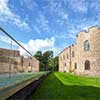
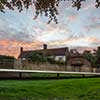
photos : Flint & Neill Ltd
Description:
This beautifully detailed pedestrian bridge fulfils the requirement to provide access across the historical moat at Taunton Castle, UK. The possible presence of archaeologically significant artefacts in the moat area, coupled with the need to minimise visual impact, resulted in the adoption of a slender reinforced concrete continuous beam solution.
Judges’ comments:
The success of this delightfully unobtrusive structure within a highly sensitive setting bears testament to the ingenious yet functional thinking of the structural engineer.
Strand East Tower, London, UK
Design: engineersHRW; Wood Beton SpA
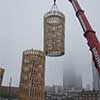
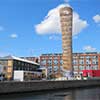
photos : Engineers HRW
Description:
The Strand East Tower stands 40m tall; a timber and steel hyperbolic paraboloid resting on a piled raft foundation just to the south of the London 2012 Olympic Park. The tower’s graceful and efficient form takes on an additionally magical aspect after dark when it is illuminated by some 600 LED lights.
Judges’ comments:
The judges are impressed with the strength, efficiency and beauty of the structure, appositely reflecting Vitruvius’ triple architectural principles of “firmness, commodity and delight”.
The Structural Awards 2013 information / images from Institution of Structural Engineers
Location: London, England, UK
Architecture Awards
Contemporary Architecture Prizes
European Architecture Competition
Comments / photos for the The Structural Awards 2013 page welcome

